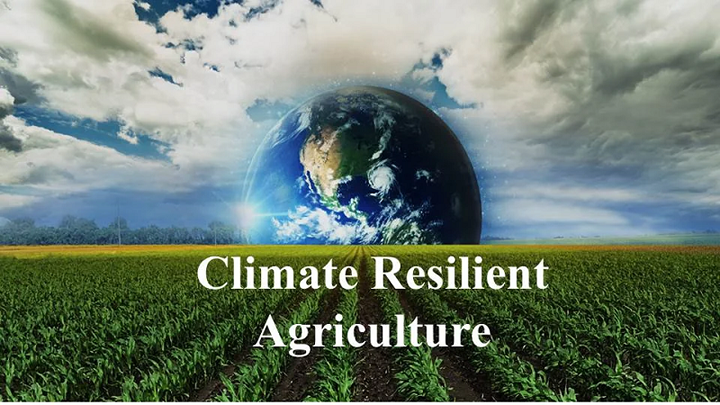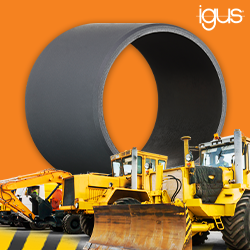Climate-Resilient Agriculture: Key Trends Cultivating the Future of Farming in 2025

The signs are on the land itself: shifting weather patterns, unpredictable rainfall, and more frequent extreme events. For today’s farmers, adapting to these changes isn't a future consideration; it's the pressing reality of the 2025 growing season. Climate-resilient agriculture has rapidly evolved from an academic concept to a practical, essential business strategy for ensuring food security and operational viability.
This shift is fueling a dynamic market focused on solutions that help the agricultural sector not just survive, but thrive. Let's explore the key trends shaping the climate-resilient agriculture landscape this year.
1. Breeding the Next Generation of Drought-Tolerant Crops
At the forefront of climate adaptation is the seed itself. Advances in both traditional breeding and modern biotechnology are delivering crop varieties specifically engineered for resilience. These new generations of seeds can maintain yield stability under water stress and higher temperatures, effectively providing a genetic insurance policy for farmers in increasingly arid regions.
2. The Data-Driven Farm: Precision Agriculture Matures
Technology is moving from a "nice-to-have" to a core component of resilient farming. The integration of IoT sensors, drones, and AI-powered farm management software allows for unprecedented visibility. Farmers can now monitor crop health at a hyper-local level, apply water and nutrients with surgical precision, and make informed decisions that optimise inputs while bolstering the crop's ability to withstand stress.
3. Smarter Water Management with Climate-Smart Irrigation
With water scarcity intensifying, efficiency is paramount. The trend is moving beyond basic drip systems toward fully integrated "smart irrigation" platforms. These systems combine soil moisture data with real-time weather forecasts and evapotranspiration rates to deliver the exact amount of water needed, exactly when and where it's needed. This not only conserves a precious resource but also promotes stronger root systems, making crops more resilient.
4. A Renewed Focus on Soil Health as a Foundation
There's a growing recognition that the first line of defence against climate change is healthy soil. Practices like no-till farming, cover cropping, and diverse crop rotations are being widely adopted. These regenerative techniques enhance soil organic matter, which improves water infiltration and retention, reduces erosion, and sequesters carbon, creating a more robust foundation for every crop planted.
5. Financial Instruments and Policy Frameworks Provide Support
The adoption of new technologies and practices requires investment. Recognising this, governments, NGOs, and the financial sector are rolling out tailored support mechanisms. This includes subsidised insurance for climate-risk management, grants for implementing precision ag technology, and loans for infrastructure upgrades, making resilience more accessible and financially feasible for growers.
6. Controlled Environment Agriculture (CEA) Expands Its Reach
For high-value crops, bringing farming indoors is a powerful resilience strategy. Vertical farms, advanced greenhouses, and hydroponic systems are mitigating climate risk by creating fully controlled environments. This approach eliminates weather dependency, slashes water usage, and enables local production closer to urban centers, strengthening regional food systems. The Global Controlled Environment Agriculture (CEA) Market reached US$87.19 billion in 2024 and is expected to grow to US$271.01 billion by 2032, registering a CAGR of 15.23% during 2025-2032, according to DataM Intelligence, highlighting the rapid adoption and investment in indoor farming solutions.
7. Predictive Analytics for Proactive Risk Management
The power of big data is being harnessed to look ahead. Sophisticated forecasting models can now analyze historical data, current conditions, and long-range climate projections to provide farmers with actionable insights. This allows them to anticipate potential threats like pest outbreaks or short-term droughts and adjust their strategies proactively, moving from reactive to resilient operations.
8. Building Resilience Across the Entire Supply Chain
The focus on resilience is extending from the field to the consumer. Companies are investing in sustainable sourcing programs and supporting their grower partners in adopting climate-smart practices. Furthermore, improvements in post-harvest logistics, such as energy-efficient cold storage and streamlined transport, are reducing food loss and ensuring that the hard-won harvest actually reaches the market.
Cultivating a Climate-Resilient Future
The journey toward climate-resilient agriculture is well underway. The trends of 2025 highlight a sector that is increasingly connected, intelligent, and proactive. By embracing a combination of advanced technology, time-tested ecological principles, and supportive policies, the agricultural industry is building a foundation not just for the next season, but for generations to come. The future of farming will be written by those who successfully merge innovation with sustainability to cultivate true resilience.
Comments (0)
This post does not have any comments. Be the first to leave a comment below.
Featured Product

